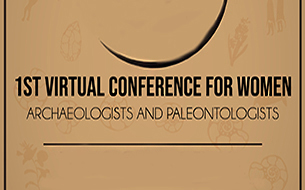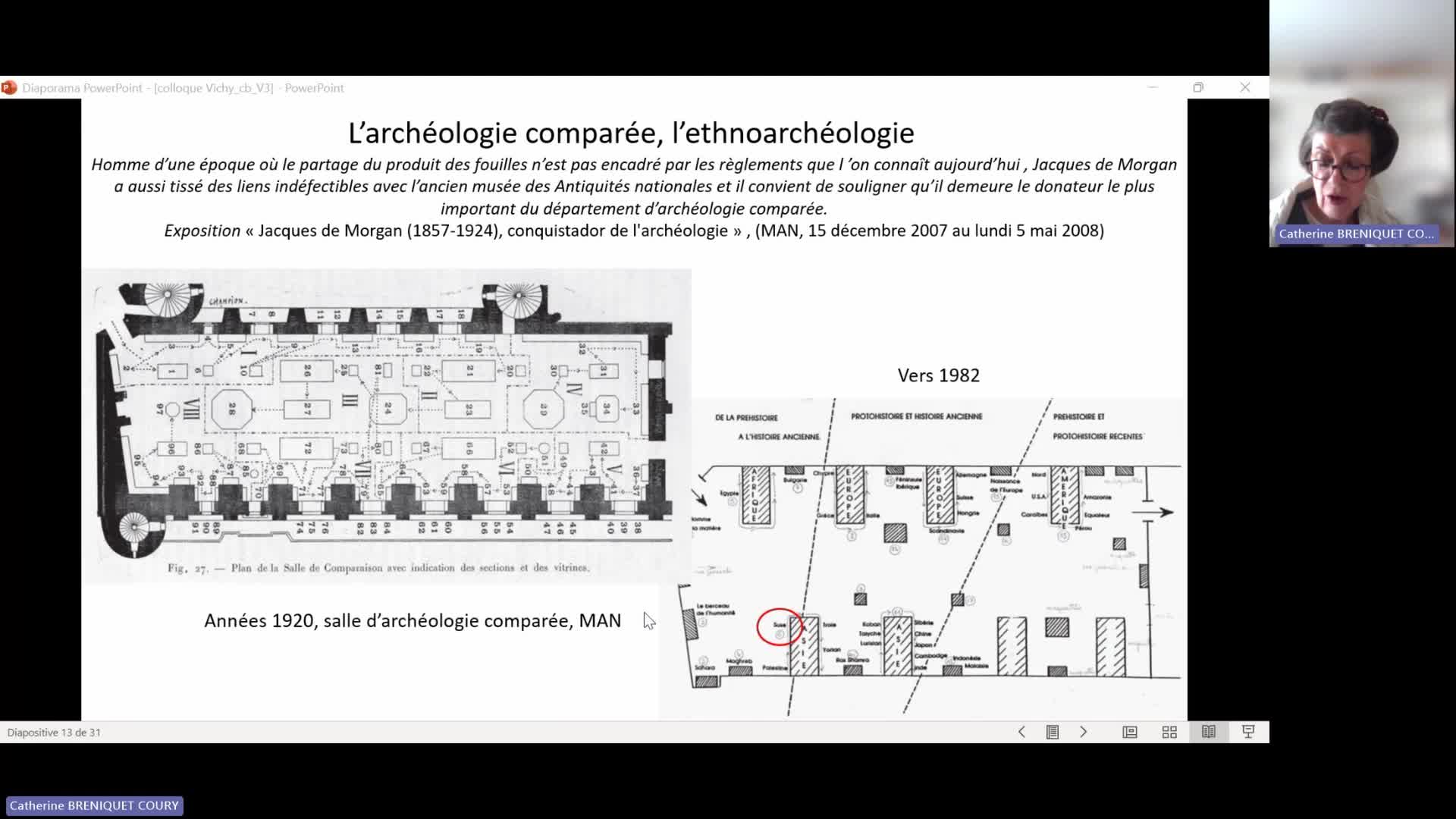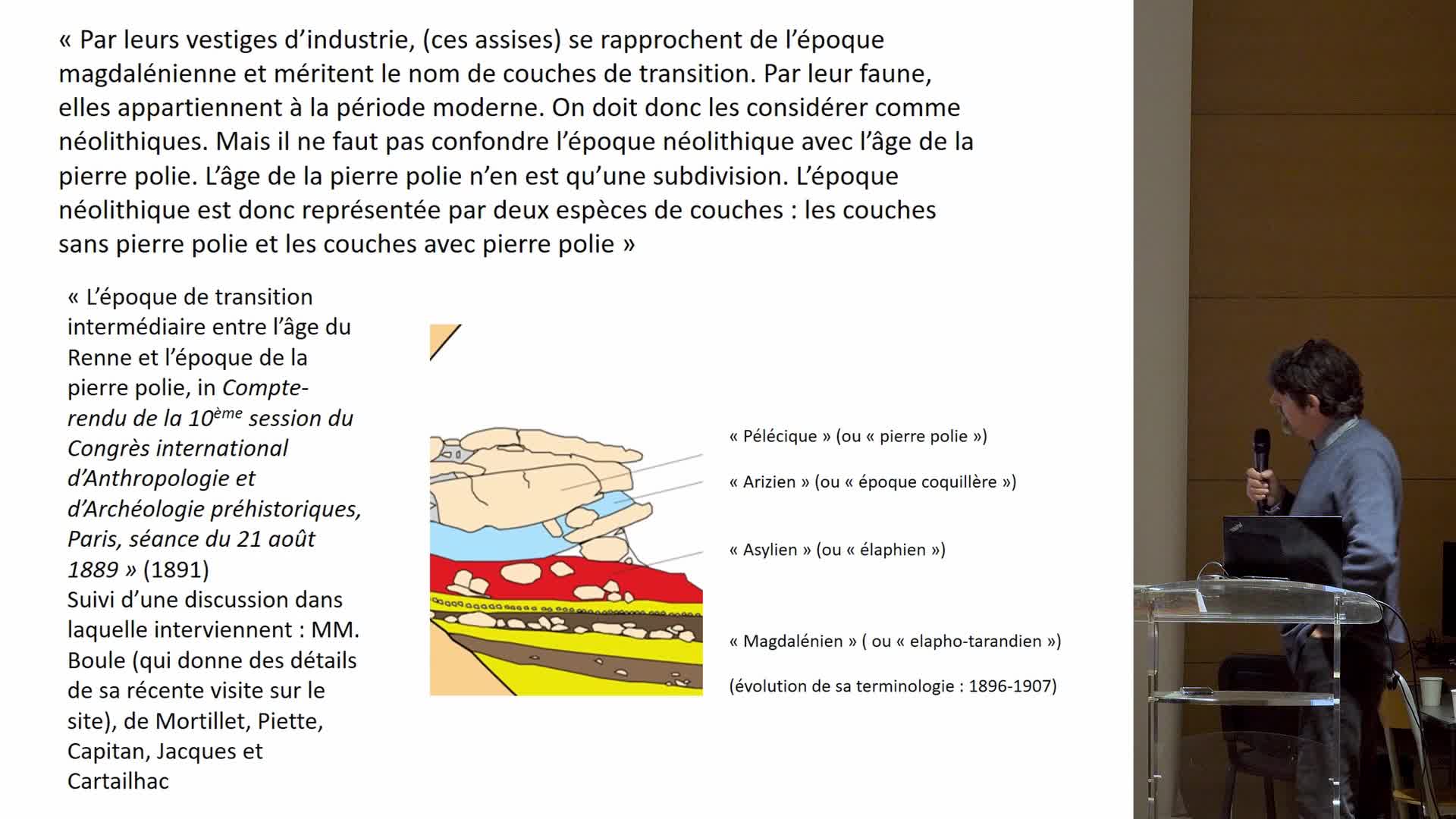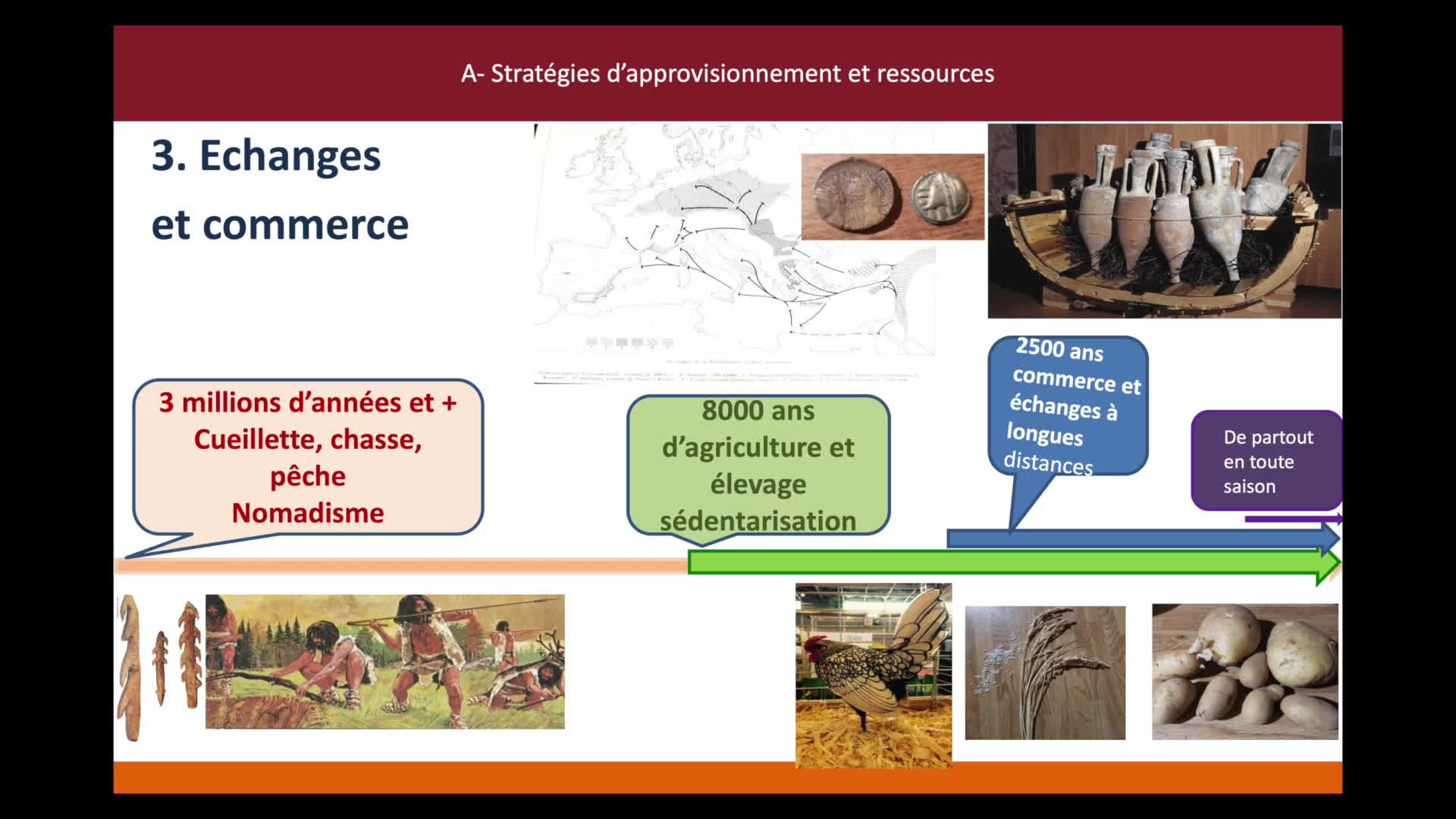Notice
Cranial vault healing in modern humans: input of archaeological and clinical data / Aliénor Lepetit
- document 1 document 2 document 3
- niveau 1 niveau 2 niveau 3
Descriptif
Cranial vault healing in modern humans: input of archaeological and clinical data / Aliénor Lepetit, in colloque "1st Virtual Conference for Women Archaeologists and Paleontologists. Nouveaux apports à l’étude des populations et environnements passés" organisé par le laboratoire Travaux et Recherches Archéologiques sur les Cultures, les Espaces et les Sociétés (TRACES) de l’Université Toulouse Jean Jaurès et le laboratoire Paléontologie Évolution Paléoécosystèmes (PALEVOPRIM) de l'Université de Poitiers, sous la responsabilité scientifique de Julie Bachellerie, Ana Belén Galán López (Traces), Émilie Berlioz et Margot Louail (Palevoprim). Université Toulouse Jean Jaurès, 8-9 mars 2021.
Session 1 : Morphological variability, taxonomy and adaptations.
Trepanation has been studied in archaeological populations since the XIXe century.Healed cases have been recognized in Neolithic populations, attesting to their great skills. It thus became a major interest in anthropological studies, causing the appearance of many hypotheses without scientific foundation and its exit from the paleopathological field. Furthermore, little attention was paid to the positive identification of the trepanation. Indeed, differential diagnosis is not always applied. One of the major issues is that the healing processes of the skull are not known. Thus, it is difficult to recognize a healed trepanation, when the cut marks have disappeared. By studying CT-scans of medical trepanations, we wanted to determine the modality of those healing processes, as well as their timeline. This will allow identifying this surgical operation with certainty within prehistoric populations, but also to estimate the survival time of individuals. Finally, we will be able to revise published cases of healed trepanations, especially those from the Museum National d'Histoire Naturelle's collection.
Intervention / Responsable scientifique
Thème
Documentation
Références documentaires
PARTIOT, Caroline, BESSOU, Maryelle, CHAVENT, Marie et al. (2017). Identification des cas de trépanations dans les populations anciennes: base de données et outil interactif de soutien au diagnostic différentiel. Bulletins et Mémoires de la Société d’Anthropologie de Paris (BMSAP), 3, vol. 29, 185-194. [En ligne : https://bmsap.revuesonline.com/articles/lvbmsap/pdf/2017/03/lvbmsap2017293p185.pdf].
Liens
Programme du colloque "1st Virtual Conference for Women Archaeologists and Paleontologists" (8-9 mars 2021)
Website du Laboratoire Paléontologie Évolution Paléoécosystèmes Paléoprimatologie (PALEVOPRIM)
Livret des résumés des communications du colloque "1st Virtual Conference for Women Archaeologists and Paleontologists. Nouveaux apports à l’étude des populations et environnements passés" (8-9 mars 2021)
Site internet dédié au colloque "1st Virtual Conference for Women Archaeologists and Paleontologists" (8-9 mars 2021)
Dans la même collection
-
Sensivity analysis to morphological changes of the shoulder joint: application to percussio…
Blasi-ToccacceliAliciaSensivity analysis to morphological changes of the shoulder joint: application to percussion gestures during Oldowan debitage / Alicia Blasi-Toccacceli, in colloque "1st Virtual Conference for
-
"Ouranopithecus macedoniensis" (late Miocene, Greece): analysis of mandibular fragments using …
IoannidouMelaniaOuranopithecus macedoniensis (late Miocene, Greece): analysis of mandibular fragments using 3D geometric morphometrics / Melania Ioannidou, in colloque "1st Virtual Conference for Women
-
Comminution capabilities of extant and fossil anthropoids during molar intercuspation: a preliminar…
WalkerAxelle E. C.Comminution capabilities of extant and fossil anthropoids during molar intercuspation: a preliminary experiment using a chewing simulator / Axelle E. C. Walker, in colloque "1st Virtual Conference for
-
New sperm whale cranium from the late Miocene and a revised family attribution for the small crown …
AlfsenApollineNew sperm whale cranium from the late Miocene and a revised family attribution for the small crown physeteroid Thalassocetus / Apolline Alfsen, in colloque "1st Virtual Conference for Women
-
What is shaping the brain? A perspective on brain size evolution in carnivorans / Margot…
MichaudMargotWhat is shaping the brain? A perspective on brain size evolution in carnivorans / Margot Michaud, in colloque "1st Virtual Conference for Women Archaeologists and Paleontologists. Nouveaux
-
Postnatal shape changes in the rodent mandible at a macroevolutionary scale / Morgane Dubied
DubiedMorganePostnatal shape changes in the rodent mandible at a macroevolutionary scale / Morgane Dubied, in colloque "1st Virtual Conference for Women Archaeologists and Paleontologists. Nouveaux apports à l
-
A transdisciplinary approach to reconstruct the Nilotic socio-ecosystem in Luxor west bank during t…
NicatoreGiuliaA transdisciplinary approach to reconstruct the Nilotic socio-ecosystem in Luxor west bank during the Ptolemaic period (3rd-1st centuries BC.) / Giulia Nicatore, in colloque "1st Virtual Conference
-
Tracing Human Ancestral Migration from its Symbiotic Bacteria / Alexia Nguyen Trung
Nguyen TrungAlexiaTracing Human Ancestral Migration from its Symbiotic Bacteria / Alexia Nguyen Trung, in colloque "1st Virtual Conference for Women Archaeologists and Paleontologists. Nouveaux apports à l’étude des
-
From monoliths to megaliths: a new approach on the megalithic burials of southwestern France / Bosc…
BoscusSarahFrom monoliths to megaliths: a new approach on the megalithic burials of southwestern France / Boscus Sarah, in colloque "1st Virtual Conference for Women Archaeologists and Paleontologists. Nouveaux
-
Foragers and their symbolic landscape. Understanding the role of rock art in the territoriality of …
JobardLéaForagers and their symbolic landscape. Understanding the role of rock art in the territoriality of Later Stone Age Matobo populations / Léa Jobard, in colloque "1st Virtual Conference for Women
-
Towards a tracking of past bird seasonal migrations through geological times: what could isotopes t…
DuhamelAnaïsTowards a tracking of past bird seasonal migrations through geological times: what could isotopes tell us? / Anaïs Duhamel, in colloque "1st Virtual Conference for Women Archaeologists and
-
Study of human group behaviors during the Last Glacial Maximum in the east Carpathian area from zoo…
DemayLaëtitiaStudy of human group behaviors during the Last Glacial Maximum in the east Carpathian area from zooarchaeological remains / Laëticia Demay, in colloque "1st Virtual Conference for Women Archaeologists
Sur le même thème
-
Entretien avec Danielle Stordeur
StordeurDanielleDanielle Stordeur est préhistorienne, directrice de recherche émérite au CNRS, spécialisée dans la néolithisation du Proche-Orient. Elle témoigne de son arrivée à Jalès et de son travail au sein de l
-
Entretien avec Frédéric Abbès
AbbèsFrédéricFrédéric Abbès, ingénieur de recherche au CNRS spécialiste des technologies lithiques néolithiques raconte son arrivée à Jalès, en Ardèche, au sein de l'équipe pluridisciplinaire montée par l
-
Entretien avec Yann Callot
CallotYannYann Callot, Professeur émérite de Géographie, évoque son arrivée et son travail à la commanderie de Jalès, les collaborations scientifiques et l’ancrage territorial du site de Jalès.
-
Entretien avec Emmanuelle Vila
VilaEmmanuelleEmmanuelle Vila, directrice de recherche au CNRS et archéozoologue revient sur son arrivée à Jalès et sur la place de l’archéozoologie au sein de l’équipe pluridisciplinaire réunie par Jacques Cauvin
-
Glozel-Session 2 : Table ronde conclusive
AngevinRaphaëlBonFrançoisGilabertChristopheGernigonKarimZurbachJulienTable ronde conclusive de la session n°2 - Glozel et la Préhistoire : construction(s) intellectuelle(s) et institutionnelle(s) - du colloque Glozel dans l’histoire de l’archéologie française : sources
-
Consacrés et soupçonnés : sociabilités et expériences partagées des préhistoriens catholiques dans …
Defrance-JublotFannyQuelles stratégies les chercheurs préhistoriens catholiques mettent-ils en place dans les années 1920 pour conserver l'intégrité de leurs exigences scientifiques et religieuses ?
-
Genèse et apories de la Préhistoire récente au Proche-Orient
BreniquetCatherineCatherine Breniquet revient sur les enjeux de la naissance de la préhistoire récente du Proche-Orient.
-
Le « Mirage oriental » de Salomon Reinach et la question primordiale de l’origine de la civilisatio…
GernigonKarimDès la publication du premier fascicule relatant ses fouilles de Glozel avec Fradin (1925), Morlet fait référence à l'article « Le Mirage oriental » publié par Salomon Reinach en 1893 dans L
-
L’archéologie néolithique à la fin du XIXe et au début du XXe siècle : entre construction scientifi…
GilabertChristopheÀ la fin du XIXe et au début du XXe siècle, la question du Néolithique est encore fortement liée à une vision évolutionniste de l’apparition de la « civilisation » en Europe et sur le pourtour
-
Glozel ou le « trompe-l’œil » d’une nouvelle résolution du hiatus entre Paléolithique et Néolithique
BonFrançoisFrançois Bon s'intéresse à la manière dont s'est difficilement opérée la reconnaissance d'une période de transition entre le Paléolithique et le Néolithique...
-
Les grandes étapes de l’alimentation, du Paléolithique à l’époque gauloise
FlouestAnneAnne Flouest, géologue et docteure en paléoclimatologie, revient sur l’étonnante évolution des usages alimentaires du Paléolithique à l’époque gauloise.
-
Les massacres de masse dans le Néolithique centre-européen (5200 - 4000 BC). Un état de la question
JeunesseChristianDepuis la retentissante et inaugurale découverte du dépôt humain de Talheim, en 1983, les fouilles de structures renfermant des groupes d’individus décédés de mort violente se sont multipliées dans le
























